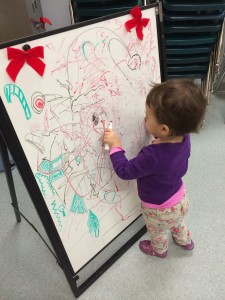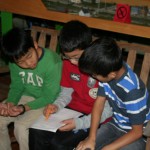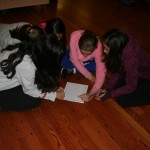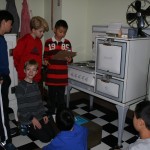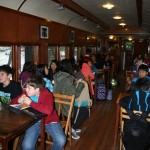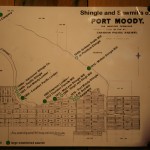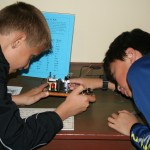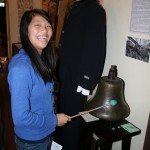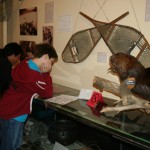Earlier this month, I had the opportunity to present about what Ms. Moody and I do in our classrooms at the National Association for Gifted Children (NAGC) Conference in Denver. My presentation, More than a Gifted Cluster, was well received and generated a good discussion about ways other districts and jurisdictions are working to address the needs of gifted learners in middle school.
Attending the conference, also gave me the opportunity to meet many of the people I follow on twitter and to see many of the lead researchers in gifted education.
Some of the highlights for me were hearing Howard Gardner, Joe Renzulli and Bob Sternberg speak about their contributions to the field as well as offer wisdom. Much of what they said really resonated with me and I really appreciated the comments Gardner and Sternberg made about ethical leadership and character development. The three also provided a great deal of reassurance for me in the work that I am doing and further rationale for continuing to work on social emotional development and leadership development with the curriculum and with gifted programming.
I also attended a session about the application of another book by Gardner called 5 Minds for the Future. I was interested in the topic because I had used the resource in a unit in Health and Career Education (HCE) last year. The presenter offered a new lense to teach the concept of 5 minds and ideas to embed it into inquiry or project based learning. Her suggestions looked at the ways to differentiate products using technology. There were several very concrete strategies that I look forward to introducing in the classroom.
My professional learning goal this year was to focus on social emotional learning for gifted students. Many of the sessions I attended were helpful to continue to develop a conceptual understanding of how to support gifted learners as a whole child. “Gifted and Thriving,” provided an excellent framework to look at the role of success and happiness when educating the whole student. The presenter discussed the role and function of spirituality in gifted education (as a conceptual model for how spirituality is related to personal thriving among gifted). Still intrigued by Gifted and Thriving, I revisited this topic in a session called Spirituality and Gifted Education. I was curious about ways to support students with existentialist strengths in the gifted programs. The session provided concrete frameworks for areas of spiritual intelligence and ways for students to continue to develop these areas. The session also looked at different research instruments and ways to nurture students with these gifts within school settings.
One of the most fun sessions I attended was Speed Geeking, a unique way to see many great new technologies and applications in a short amount of time. 14 different educators presented for 3-4 minutes about their favourite tech this year. Some of the highlights where meeting many of my gifted PLN face to face and learning about Air Server, advanced uses of google reader and several resources for project based learning.
Ridley Pearson, our next keynote speaker, discussed his process of developing his stories and writing. He explained how he coaches young writers to develop their stories and how he came to have a career with Disney. He was very creative and inspiring and shared a great definition for writers’ block.
An unexpected highlight – Asynchronous Development at Age 20 – 1992-2012 with Linda Silverman, Stephanie Tolan, Jim Delisle – this session completely re-framed by understanding of the concept of asynchronous development. It was personally enlightening and gave much food for thought about structures and support within my classroom and MACC for these learners. Next to Gardner these three were the best presenters of the conference!
Ms. Moody and I were intrigued that so many of our students were interested in the Mayan Calendar, so I was thrilled to see a session called Is it the end of the world? Maya by the Ricks Centre for Gifted, Denver. This session gave me a couple new ideas for the unit we are doing in class – ways to further enhance our unit and ways to extend the integration of other disciplines.
Another session, Grit, Mindset and Neural Plasticity – Inquiry Based Social-Emotional Learning was an amazing look into a K-8 Charter school in Seattle that runs with a very similar vision and mission as the MACC classes. I will visit this school at some point to see first hand how their model supports gifted learners in the middle grades. Really appreciated the integrated, whole school model they discussed.
And one of the last sessions I attended was Creativity is a Decision with Bob Sternberg. He discussed the role of creativity in the classroom and how to encourage students to be creative in school. He is an excellent and engaging presenter and covered both ways to promote creativity but also obstacles that may need to be addressed.
I’m looking forward to integrating many of the ideas into practice and I’m feeling re-energized from the synergy of the conference. I’m very grateful for the opportunities for continued professional development.

